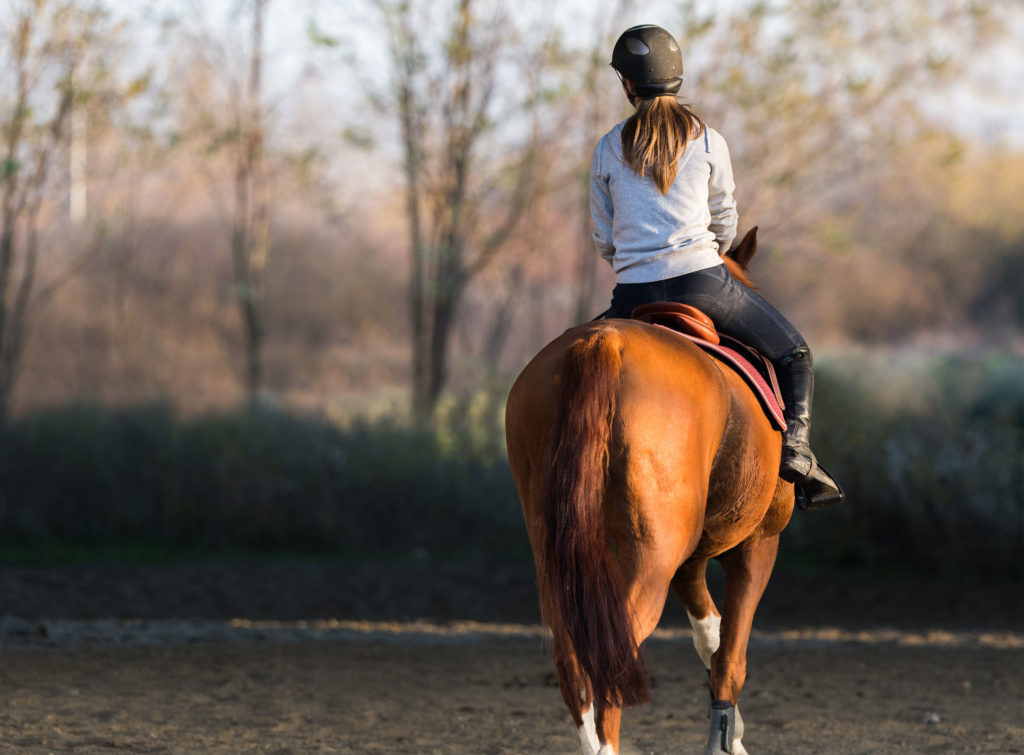
Take a thousand-pound-plus horse, add a neurologic disorder such as equine protozoal myeloencephalitis (EPM) or cervical vertebral stenotic myopathy (often referred to as wobbler syndrome), and you get a situation that undoubtedly presents safety risks for riders and handlers, not to mention the animal itself. Less clear is the horse’s athletic future; each equine patient is unique, as is his neurologic condition, and veterinarians must shoulder the complex task of advising whether the horse is safe to ride.
Developing a neurologic condition “is not an automatic disqualification for use, but you must be careful,” says Martin Furr, DVM, Dipl. ACVIM, PhD, MA Ed, senior assistant dean of Professional Programs and head of the Department of Physiological Sciences at Oklahoma State University’s Center for Veterinary Health Sciences, in Stillwater. He describes how he makes a call as a treating veterinarian on these cases.
Consider Safety and Liability Concerns
The veterinarian’s decision involves balancing rider safety, liability concerns, animal welfare issues (whether it’s even appropriate to use the horse), and concerns for handlers. “And sometimes we have some competing interests,” he says. “Every single case is individual and is going to be based on your professional expertise and judgment … to make that decision.”
The questions he asks himself during these assessments are not so different than those posed with prepurchase exam findings.
“The first thing I think about is the severity and nature of the deficit,” he says. Seizure disorders, spinal ataxia (incoordination) or peripheral neuropathy (damage to the nerves in the horse’s extremities) are some examples. “Obviously, the ultimate diagnosis is important.”
What Will My Vet Consider When Assessing My Horse?
Here are a few of his guidelines:
- Most horses with Grade 1 spinal ataxia (subtle neurologic deficits only noted under special circumstances, for example, while walking up a slope) are rideable.
- Most Grade 3 or 4 horses should not be ridden (Grade 3: moderate deficits at all times/obvious to all observers, regardless of expertise; Grade 4: severe deficits with tendency to buckle, stumble spontaneously, and trip and fall).
- Horses with seizures or a history of seizures must be seizure-free off medication for 30 days before they are considered safe to be ridden (preferably 60 days if the seizures were happening every few days before treatment, or a period of three times the seizure interval if not as frequent).
- Horses on anticonvulsants (i.e., phenobarbital, phenytoin) should not be ridden.
- Peripheral neuropathies are wild cards—affected horses’ rideability all depends on the nature and severity of their clinical signs.
Other Factors That Might Affect Rideability
Progression of the condition, whether slow or potentially abrupt, also dictates how long the horse will be safe to ride. In that vein, Furr considers the horse’s suitability for the rider’s goals: “How do they intend to use this horse and what would they like to do with it?”
The horse’s demeanor can also play a part in how he responds to having a neurologic deficit. For instance, a “hot” horse might become frantic when he loses his footing, whereas a more stoic one might not.
And, finally, the rider’s skill, knowledge, and experience can also make a difference, though Furr acknowledges he doesn’t know how important these are. Bottom line: Sometimes it doesn’t matter how much experience and finesse a rider or handler has—there’s little you can do to prevent a fall.
Furr says he decides what risk the horse’s neurologic deficits pose, then communicates it to anyone involved, including riders, handlers, shippers, etc. Acknowledging that legalities vary in different parts of the world, he recommends veterinarians get guidance from appropriate professionals on how and what to communicate to owners.
Personally, Furr prefers to make his decision unambiguous to the owner.
“I put it in writing,” he says. “They’re not our children. All we can do is let them know what we think, and why it is important, and they’ll make their own decisions, hopefully with careful consideration of our input.”
(This information was originally presented at the 2016 British Equine Veterinary Congress, in Birmingham, U.K., and reviewed again by the source in 2023.)


